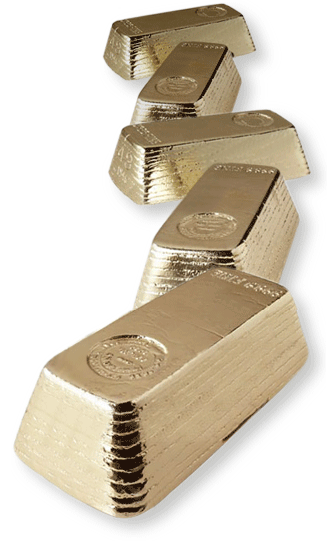Education About Gold and Platinum and other metals
Gold doesn’t tarnish, rust, or corrode, and even though it is very strong, it is also the most malleable of all known metals. Gold, the element Au on the periodic table, was one of the first known metals.
Gold – Karat

Pure gold is too soft to withstand the stresses of every-day wear, so it is alloyed with a mixture of metals like silver, copper, nickel, and zinc to give it the strength and durability that make it practical for use in jewelry. Karatage, noted by a number followed by “k” indicates purity, or how much of the metal in a piece of jewelry is gold. Karatage is expressed in 24ths, making 24k gold 100% gold.
- 24 karat = 100% gold – Too soft for jewelry
- 22 karat = 91.7% gold – Very soft — not recommended for jewelry
- 18 karat = 75.0% gold – Recommended for fine jewelry
- 14 karat = 58.3% gold – Recommended for jewelry
- 12 karat = 50.0% gold – Acceptable for jewelry
- 10 karat = 41.7% gold – The legal karat limit considered as real gold in the United States acceptable for jewelry
The color of gold is determined by two factors:
- The type of metal alloys included in it
- The percentage of each metal alloy
Yellow Gold
In Unclaimed Diamonds jewelry, you’ll find 18k, 14k, and 10k yellow gold. 18k gold contains more precious metal than 14k gold. It is composed of 75% gold, which is alloyed with other metals to make it strong enough to withstand every-day wear. Because 14k gold is composed of only 58.3% gold, and 41.7% other metals that give it strength, its gold color is not as rich as 18k gold. 10k and 14k gold is most commonly found in jewelry such as earring and clasps where strength is most important.
White Gold
White gold is increasing in popularity, but what people don’t realize is that there is no such thing as “white gold.” All metals exist in nature as various shades of grey with the exception of gold and copper. An alloy of metal is a combination of various metallic elements that are used in varying proportions to produce the desired color and properties.
Steel alloys for example are composed primarily of iron, nickel, and other metallic elements. White gold is also an alloy containing gold of course (which is yellow), along with nickel, palladium, and other whiter metals to make the alloy appear white. However, since there is gold in the alloy, it will always appear “yellowish.”
White gold is almost always rhodium plated. It is a common practice in the jewelry trade to always rhodium plate white gold jewelry. Similarly, platinum can be rhodium plated, but sometimes it is left in its natural state. Rhodium is very white, reflective, extremely hard, and virtually tarnish-proof. Platinum, on the other hand, normally appears to be a more grayish white and not as bright, which is why it is sometimes plated as well, unless it has a good amount of palladium in the alloy. When the plating on platinum begins to wear thin you don’t notice it as much, but you do on white gold because the alloy is yellowish. The plating will probably start to wear off in 6 months – 1 year of you wearing it, depending on how rough you are on the rings, and how much rhodium plating is on the ring. All white gold jewelry will require maintenance at one time or another to keep it looking brand new.
Rose Gold
Rose gold gets its color from a larger proportion of copper in the metal alloy. This gives the gold a beautiful pink color.
The gold standard defines the world’s currency system, whereby money represents a value in gold.
Platinum Education
Platinum jewelry at Unclaimed Diamonds is made of fine quality jewelry grade platinum. Its cool white sheen makes platinum a popular metal for settings, as it accentuates the sparkle and brilliance of a diamond. The most appealing characteristic of platinum is its durability.
While it is the strongest of jewelry metals, it can scratch and develop a patina of wear. Many people prefer this look, unique to platinum. But if you like the shine, a jeweler can polish your jewelry to bring back the original reflective finish. In the mean time, buffing with a soft cloth can give your jewelry renewed luster.
The majority of our platinum jewelry is 95 percent pure platinum combined with 5 percent iridium, palladium, ruthenium or other alloys. For guaranteed quality in platinum, look for the marks 950 Plat or Plat.
Sterling Silver
Sterling silver is usually 92.5% silver and 7.5% copper. Silver is much more plentiful than platinum or gold and is much less expensive. It takes on a much higher polish than any other metal, but it does tarnish. The tarnish can be removed, but silver requires much more care than other metals.
Titanium
Titanium is a light, strong, and corrosion-resistant metal. Titanium offers you seven times the strengh of platinum at about 1/3 of the weight. It is the hardest natural metal on earth and therefore offers more scratch resistance than gold or silver. In addition, titanium is also hypoallergenic. When ordering titanium rings, be extra sure about your ring size. The biggest drawback of titanium rings is that they bend under normal usage and is stronger than any other alloy.cannot be sized by traditional ring sizing methods.
Stainless Steel
Stainless steel is a low cost alternative to traditional metals. It is naturally hypoallergenic and will not rust or tarnish. Stainless Steel will not break or bend under normal usage and is stronger than any alloy.

